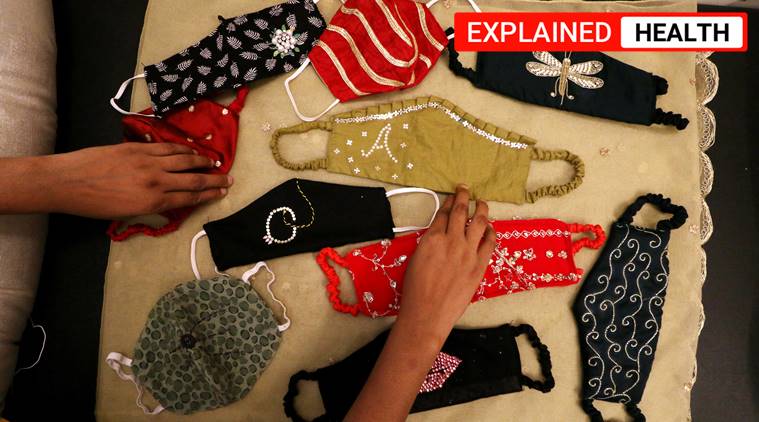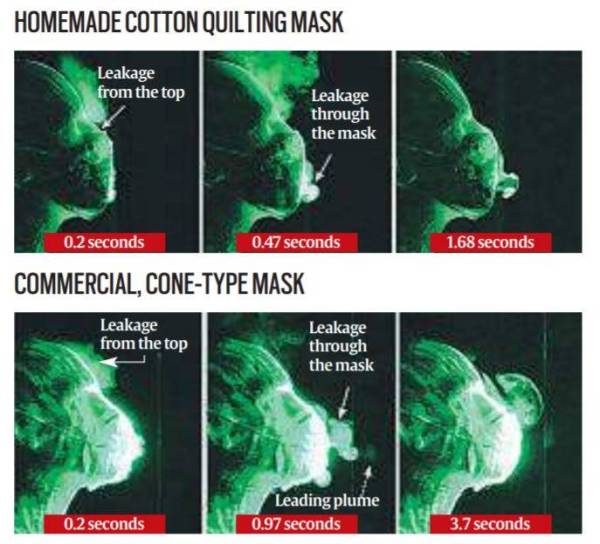- India
- International
Explained: For arresting cough particles, mask shape and material matter
What kind of masks works best, given that not everyone has access to an N-95? What material, and what shape can best arrest droplets from the mouth, and the smallest particles (aerosols)?
 What kind of masks works best, given that not everyone has access to an N-95? (Express Photo: Vishal Srivastav)
What kind of masks works best, given that not everyone has access to an N-95? (Express Photo: Vishal Srivastav)
The importance of wearing a mask has been repeatedly stressed throughout the Covid-19 pandemic. It may have become all the more relevant now, with 239 scientists having written to the World Health Organization about the possibility of airborne transmission of the virus (as reported in The New York Times).
What kind of masks works best, given that not everyone has access to an N-95? What material, and what shape can best arrest droplets from the mouth, and the smallest particles (aerosols)?
While evidence on such aspects is still emerging, researchers from Florida Atlantic University recently demonstrated a way to check mask performance. Drawing from the principles of fluid mechanics, they used a mannequin to simulate coughs, and tracked the movement of the ejected articles by using a laser. Their results are published in the journal Physics of Fluids.
 A homemade mask arrests forward motion of droplets almost completely, with a little escape from gaps along top edge. In a commercial cone-style mask, leakage from these gaps are noticeable. (Siddhartha Verma, Manhar Dhanak & John Frankenfield/Physics of Fluids)
A homemade mask arrests forward motion of droplets almost completely, with a little escape from gaps along top edge. In a commercial cone-style mask, leakage from these gaps are noticeable. (Siddhartha Verma, Manhar Dhanak & John Frankenfield/Physics of Fluids)
The broad findings
* Face masks built with a loosely folded handkerchief, as well as bandana-style coverings, showed little capability to stop the smallest aerosolised respiratory droplets.

* Well-fitted homemade masks with multiple layers of fabric, and commercial cone-style masks, curtailed the speed and range of the respiratory jets significantly.
* Even in these homemade masks and cone-shaped masks, a little leakage happened through the material, and from small gaps along the edges.
* In uncovered coughs, droplets were able to travel far beyond 6 feet (the recommended distancing guideline).
 The set-up
The set-up
The researchers used a hollow mannequin head, which was padded on the inside to approximate the internal shape and volume of the nasal and oral cavities, and mannequin at a height of 5 ft 8 in to match that of an average human male.
To emulate a cough or a sneeze, a pump delivered the pressure impulse. The air capacity of the pump was 500 ml, comparable to the volume expelled during a cough.
A recreational fog/smoke machine generated tracer particles from a mixture of distilled water and glycerine. The droplets were less than 10 microns in diameter, comparable to the smallest droplets expelled in a cough. A 5 mW green laser pointer helped capture the visuals.
The takeaways
When without a mask, the mannequins were projecting droplets much farther than 6 feet. This distance was reduced by 1/8 when the mannequin wore a loosely folded handkerchief, and by 1/2 when it wore a bandanna-style covering. Well-fitted homemade masks with multiple layers of quilting fabric and off-the-shelf cone-style masks proved the most effective, some leakage notwithstanding (see diagrams and table).
The bandanna-style mask used was of elastic T-shirt material, the folded handkerchief was of cotton, the stitched mask was of quilting cotton, and the cone-style mask was of random assorted material.
More Explained
EXPRESS OPINION
Apr 23: Latest News
- 01
- 02
- 03
- 04
- 05








































